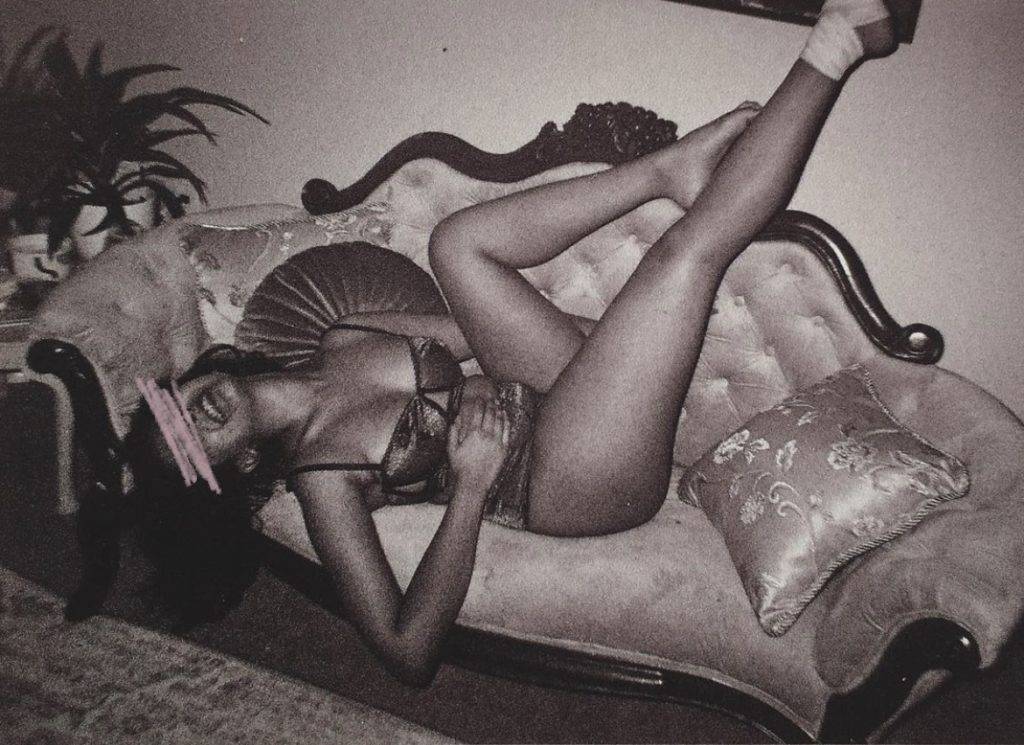Written by Arthi Chandra.
A “femme” is a queer person who presents in a feminine manner. A femme can be a cis woman, a trans woman, a gender-nonconforming person, or a nonbinary person. This person may be a lesbian, pansexual, bisexual, or any other identity under the queer umbrella.

To be queer is to continually meet oneself. It is to lose yourself, over and over, and to make yourself be reborn. It is to bury your body, your lust, your need for love and desire, to let it seep in the mud. It’s a cycle that spits you up from the dirt. It’s falling in love with your friends and always feeling like there is a line, an invisible tightrope- unspoken, unseen, but fatal if crossed.
It’s beginning to know one’s body- the pinpricks, the icy fingertips, the surges of heat that emerge from your core when you’re faced with another queer person. The silent confirmation. Of recognition. The things that bring out my humanness- my queerness, have been my love for the other in spite of myself.
There is an absence of eroticism in our theatre scene. We often see a performance of sexuality as opposed to sensuality- where nudity is considered bold and seeing the body is “revolutionary”. I beg you all to see a burlesque show (I recommend Diasporic Dynasty).
Where are the intimate scenes of bliss- or joy- or sexy, consensual, moments of yes?
Heterosexualism often portrays sexuality as fast paced and exciting, a fury of passions that will ultimately result in consequence of some sort (ie. the woman gets punished, or characters are having affairs, it’s a controversial age-gap, it’s so-and-so’s best friend, etc.) These moments of passion will eventually cause the characters pain.
The other portrayal of sexuality is assault, it’s something to be manipulated, to hold power, it’s used as a threat or cause for dramatic action. While we’re moving beyond the strange desire to stage sexual violence (thank god), there’s been a massive influx of plays about assault- or harassment, or questionable-consent. And sure, those stories are needed and valid, but WHAT ABOUT THE JOY? Where are the stories that celebrate bodies and sexuality? Why does every play about a woman’s body condemn her to suffering? Why not also include healthy examples of what intimacy looks like, rather than continue telling the audience that it is always dangerous and punishable?
When I make work I’m often told by men that the work is too sentimental. Too soft. Too sappy. But maybe my work isn’t made for men. Maybe my work is formulated under the gaze of queer femmes who take pleasure in the intimacy of fingers trailing across skin. Of hot breath down the other’s neck. Looking up at her from between her thighs. Of holding her against your chest and feeling your pulses beat. These moments are illegal in 71 countries, punishable by death in 11. When I was fourteen I held hands with my girlfriend on a walk in the afternoon and was cornered by a group of men. I thought I was going to die. My friends have had bottles thrown at them, been yelled at on buses, separated from those they love. Our softness comes at a cost. To hold her hand, to walk arm in arm, to lean my head against her shoulder on the way home- is often a dream we carry with us, but is mostly acted upon in secret.
Queer theatre is often formulated as a coming out story, an exploration of bravery for being who you are despite all the odds, of getting over the fact someone at some point called you a faggot or a dyke, and now you wear flannel and have tattoos. The true celebratory moments of queerness are never seen, rather they are traded out for retellings of overcoming trauma. But queer celebration is also made through these moments of intimacy- between the self, between the other, between multiple. It is the relearning of the body, the heart, of hurt, of sensuality, of care, of rediscovering your most inner self constantly. Queerness is a tumultuous relationship with your heart; it’s to make the choice between safety and truth and boldness- in order to find joyful, honest intimacy.
I believe it is revolutionary to show up on stage with the ability to have softness with oneself. With the other. To show the gestures that encompass that vast amount of things that love of another contains. I want to see the soft touches, lingering kisses, the messy-erotic-heartfilled moments that are indeed the reality of femme intimacy. All of these things are part of the femme climax. It’s a building of circumstances that create an entire story, an entire world, a full relationship- as opposed to the singular climatic arc (often in-line with the male-climactic experience).
This is my long-winded way of saying, put more queer femmes on stage. Hire more queer femme playwrights. Hire queer intimacy coordinators. Include non-binary and trans artists as your collaborators and actually listen to what they are saying. Theatre that “represents queerness” is meant for straight people. I want to make queer theatre for queer people. Queer art goes beyond the surface of “is gay good or bad”? Or how hard it is to “come out”. Queer theatre is the relationship between one’s ever changing self and the ever changing other. And these moments are messy, and hard, and painful, but are also filled with joy, with intimacy, and so much love.

About the Author: Arthi Chandra is a Vancouver based director, writer, and theatre maker. Her practice is rooted in devising text-based new works, and adaptations of contemporary and classical plays. Her work focuses on queer joy, parties, and intimacy. Recent works include Done/Undone at Bard on the Beach, and Passenger Seat, a pop-rock theatre concert all about love. She has performed in Vancouver and New York. Arthi also teaches devising and directing (Toronto Metropolitan University, VanArts, Bard on the Beach). She is a graduate of the theatre performance stream from Simon Fraser University’s School for the Contemporary Arts.

